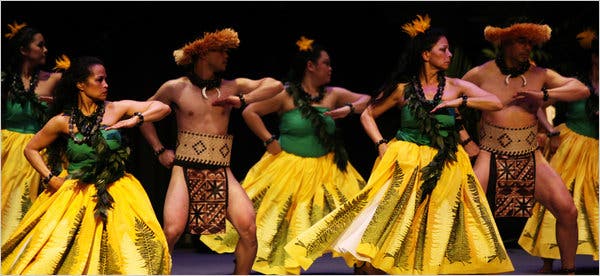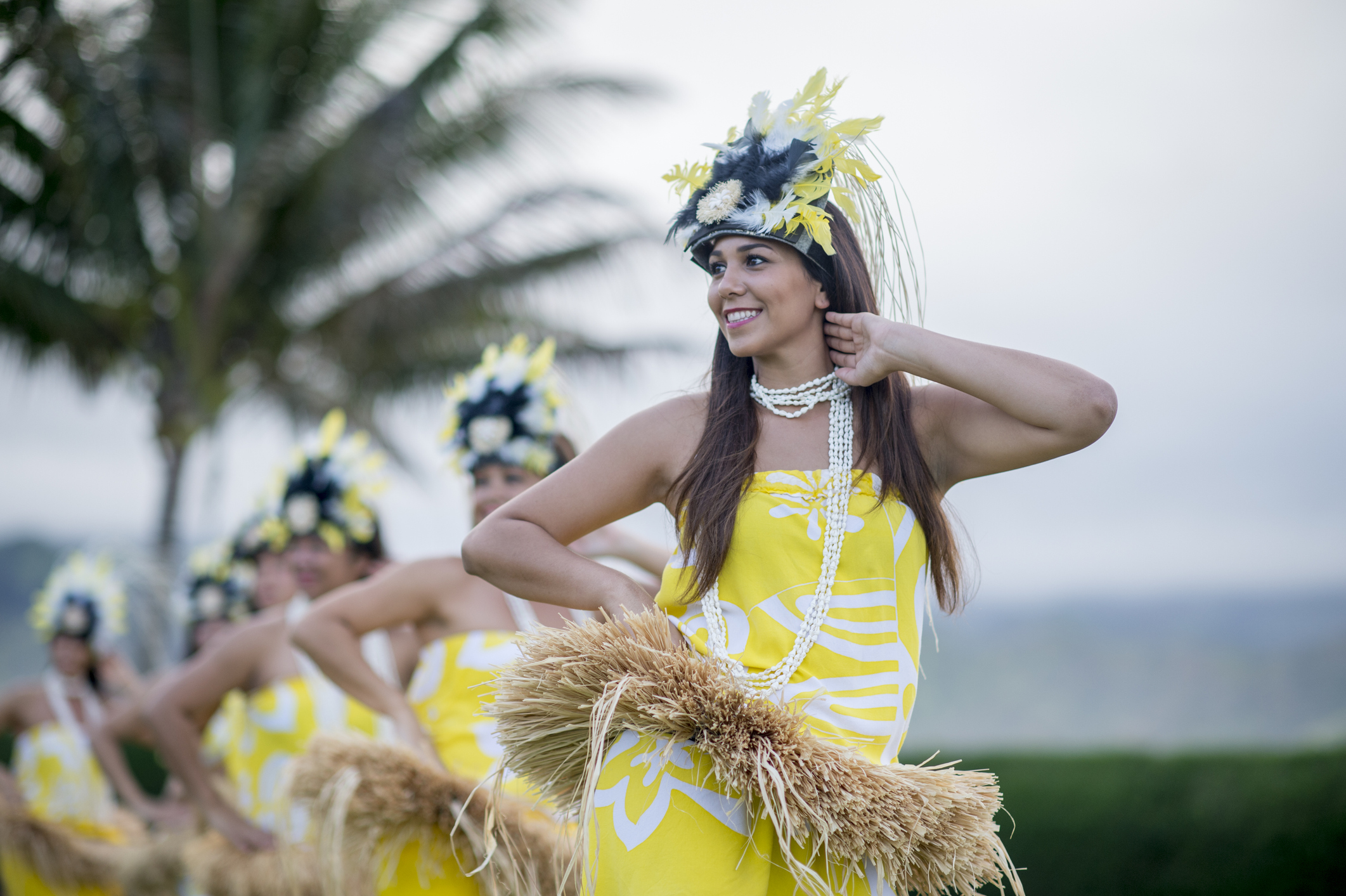Immerse yourself in the vibrant and captivating world of Hawaiian music and dance. From the rhythmic beats of the drums to the melodic strumming of the ukulele, this rich tradition has been a cornerstone of Hawaiian culture for centuries. Experience the enchanting hula dances that tell stories and celebrate the beauty of the islands. Discover the unique nuances and deep-rooted significance behind each step and note, as you embark on a journey through the mesmerizing world of Hawaiian music and dance.
History of Hawaiian Music
Hawaiian music has a rich and vibrant history that reflects the islands’ unique cultural heritage. The roots of Hawaiian music can be traced back to ancient Polynesian origins, with the early settlers bringing their traditions and musical practices to the islands.
Ancient Polynesian Origins
Hawaii’s history dates back more than a thousand years when Polynesian voyagers from the Marquesas Islands first arrived on the islands. These early settlers brought with them the chants, songs, and dances that would form the foundation of Hawaiian music. The ancient Polynesians used music not only for entertainment but also for religious rituals and storytelling. They played various traditional instruments such as drums and percussions, using them to accompany their chants and dances.
Influence of Western Contact
In the late 18th century, European explorers and missionaries made contact with the Hawaiian Islands, bringing with them new musical influences. Western instruments such as the guitar, ukulele, and steel guitar were introduced to Hawaii, forever changing the sound of Hawaiian music. These new instruments were quickly embraced by the locals and blended with traditional Hawaiian melodies, creating a unique fusion of Polynesian and Western musical styles.
Development of Modern Hawaiian Music
Throughout the 19th and 20th centuries, Hawaiian music continued to evolve and develop. Musicians explored new genres and experimented with different instrumentations. King David Kalākaua, known as the “Merrie Monarch,” played a significant role in promoting Hawaiian music and dance during his reign in the late 19th century. He encouraged the preservation of traditional chants and hula, while also embracing new musical styles. Today, modern Hawaiian music incorporates elements from various musical genres, including jazz, pop, reggae, and rock, while still maintaining its distinct Hawaiian identity.
Traditional Hawaiian Instruments
Traditional Hawaiian music is characterized by the use of unique and indigenous instruments. These instruments not only create the distinct sound of Hawaiian music but also carry cultural and historical significance.
Ukulele
The ukulele is often considered the defining instrument of Hawaiian music. Introduced to Hawaii by Portuguese immigrants in the late 19th century, the ukulele became an integral part of the Hawaiian music scene. Its small size, easy playability, and sweet tone make it a versatile instrument for both solo and ensemble performances. The ukulele’s cheerful sound perfectly complements the joyful and lighthearted nature of Hawaiian music.
Slack Key Guitar
Slack key guitar, also known as ki ho’alu, is another essential instrument in traditional Hawaiian music. It is a fingerstyle guitar technique where the strings are tuned to create a rich and resonant sound. Each fingerpicking pattern and tuning style in slack key guitar has its own unique name and character. This soulful and melodic style of playing evokes the natural beauty of the Hawaiian landscape and is often associated with heartfelt storytelling.
Steel Guitar
The steel guitar is a key contributor to the iconic sound of Hawaiian music. Developed by Joseph Kekuku in the late 19th century, the steel guitar is played by sliding a metal bar (often made of steel) across the strings. This technique creates a smooth and haunting sound that perfectly captures the essence of Hawaiian melodies. The steel guitar is commonly used in both traditional Hawaiian music and contemporary Hawaiian genres.
Pahu Drum
The pahu drum holds great significance in Hawaiian cultural practices. It is a large, barrel-shaped drum made from a hollowed-out trunk of a coconut tree. Used in ancient times for religious ceremonies and hula performances, the pahu drum produces deep, resonant tones that add a powerful and rhythmic element to traditional Hawaiian music.
Ipu
The ipu is a percussion instrument made from a hollowed-out gourd. It is commonly used in hula performances and traditional chants. The ipu provides a steady beat and creates a distinctive sound that enhances the overall rhythm of Hawaiian music.
Pu’ili
The pu’ili is a pair of bamboo rhythm sticks traditionally used in hula performances. By clapping the sticks together, dancers create a percussive sound that syncs with the music and adds an element of excitement to the performance. The pu’ili’s sharp, percussive tone contrasts beautifully with the melodic instruments in Hawaiian music.
Pahu
Similar to the pahu drum, the pahu is a larger drum used for ceremonial purposes. Made from a massive hollowed-out log, the pahu produces thunderous beats that reverberate through the air. Its deep, resonant sound commands attention and plays a significant role in traditional Hawaiian music.
Puniu
The puniu is a small, handheld Hawaiian drum made from a coconut shell. It is played by striking the drumhead with the hand, producing a high-pitched, percussive sound. The puniu adds a vibrant and lively element to Hawaiian music, creating a dynamic contrast with the lower pitches of other traditional instruments.
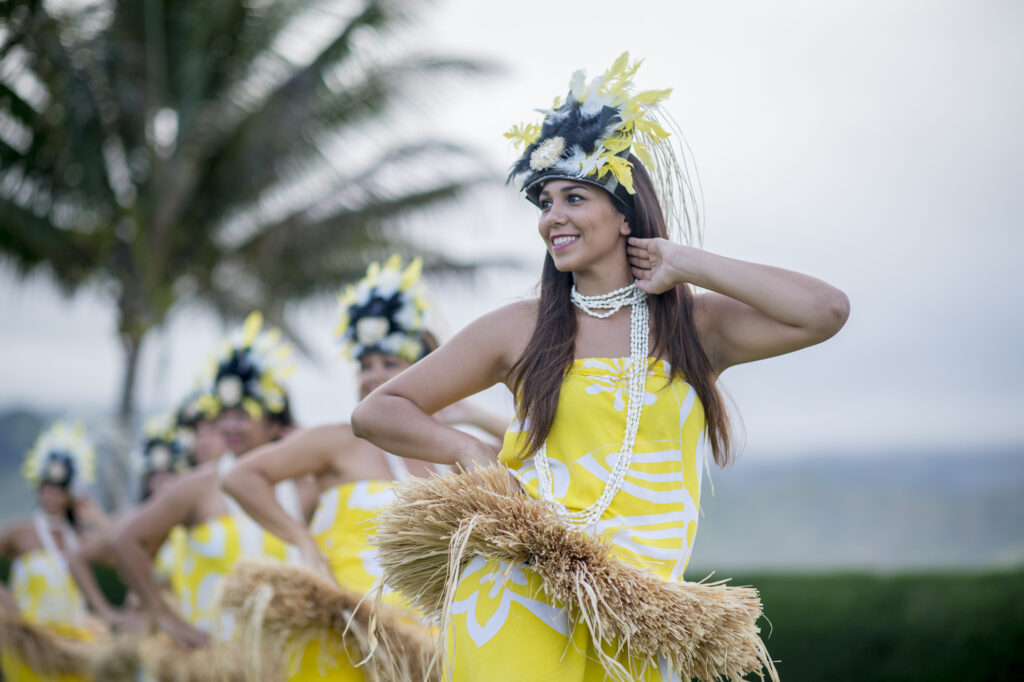
Hula Dance
The hula dance is an integral part of Hawaiian culture and closely intertwined with Hawaiian music. It is a form of storytelling through movement, where dancers use graceful gestures and intricate footwork to convey emotions, legends, and historical events. The hula dance is deeply rooted in Hawaiian traditions and has its origins in ancient Polynesia.
Origins of Hula
Hula has been passed down through generations as an oral tradition, with knowledge and techniques being shared through hands-on teaching rather than written documentation. Its origins can be traced back to ancient Polynesia, where the dance was used as a form of worship and to convey stories and genealogies. Hawaii’s unique natural landscape, with its lush forests and pristine beaches, provided inspiration for the movements and themes found in hula.
Different Styles of Hula
There are two main styles of hula: hula kahiko and hula ‘auana. Hula kahiko, also known as ancient hula, is a traditional form of hula that incorporates complex footwork, precise gestures, and chants accompanied by traditional instruments. Hula ‘auana, on the other hand, is a more contemporary style that emerged in the late 19th century. It is often accompanied by Western instruments such as the ukulele or guitar and allows for more fluid and expressive movements.
Significance of Hula in Hawaiian Culture
Hula is more than just a dance; it is a vital part of Hawaiian culture and identity. Through hula, stories of Hawaiian history and mythology are preserved and passed down from one generation to the next. The movements, chants, and music of hula reflect the deep spiritual connection between the Hawaiian people and their environment. Hula performances are often seen as a way to honor and pay respect to the land, sea, and ancestors.
Hawaiian Chants and Mele
Chants and mele (songs) are an integral part of traditional Hawaiian music. They serve as a way to communicate stories, historical accounts, and spiritual messages. These oral traditions have been passed down through generations, preserving the richness of Hawaiian culture and language.
Chants as Oral Tradition
Hawaiian chants, also known as oli, have played a significant role in Hawaiian culture for centuries. They were used for various purposes, including religious ceremonies, honoring chiefs, and telling stories. Chants were performed by skilled chanters who were deeply knowledgeable about the proper pronunciation, rhythm, and intonation. Through oli, ancestral knowledge and wisdom have been preserved and passed down, ensuring the continuity of Hawaiian traditions.
Types of Hawaiian Chants
There are different types of Hawaiian chants, each serving specific purposes. The pule chant is a form of prayer, expressing gratitude and seeking guidance from the gods. The mele hula, as the name suggests, is a chant specifically created for hula dances, accompanying the movements and adding depth to the storytelling. The mele oli is a chant that tells stories, recounts historical events, or expresses deep emotions. Each type of chant has its unique structure, rhythms, and melodic patterns, which contribute to the overall richness of traditional Hawaiian music.
Importance of Mele in Hawaiian Music
Mele, or Hawaiian songs, hold a special place in the heart of the Hawaiian people. Mele can be uplifting, joyful, solemn, or even provocative, depending on the context and purpose. They are often accompanied by traditional instruments such as the ukulele, slack key guitar, or steel guitar. Mele not only entertain but also convey important cultural values, preserve historical knowledge, and express feelings of love and longing for the islands. They have the power to transport listeners to the beauty and spirit of Hawaii, even if they are miles away.
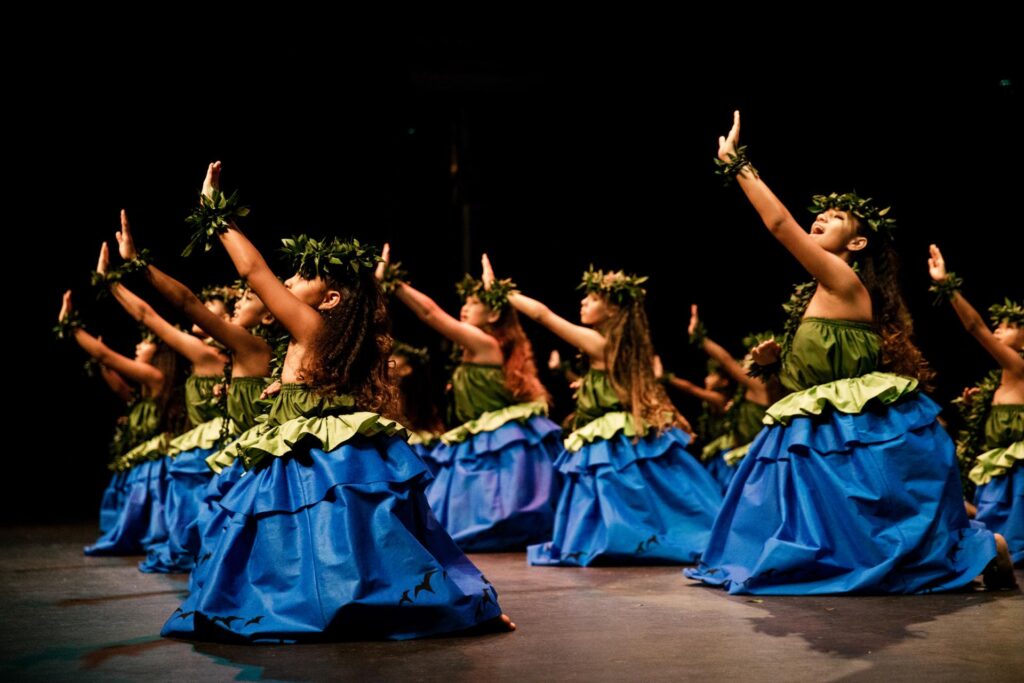
Famous Hawaiian Musicians and Dancers
Hawaii has produced numerous talented musicians and dancers who have made significant contributions to the world of Hawaiian music and dance. Their artistry and dedication have helped shape the unique sound and style of Hawaiian music that is cherished worldwide.
Israel Kamakawiwo’ole
Israel Kamakawiwo’ole, also known as Iz, is an iconic figure in Hawaiian music. His soulful voice and gentle ukulele strumming captivated audiences and brought Hawaiian music to the international stage. His rendition of the song “Over the Rainbow/What a Wonderful World” became a global hit, solidifying his legacy as one of Hawaii’s greatest musicians.
Benny Kalama
Benny Kalama is a legendary musician who was a member of the influential group The Kalama Brothers. Known for his smooth singing voice and incredible falsetto, he was a driving force in the Hawaiian Renaissance of the 1970s. Benny Kalama’s music continues to inspire and amaze audiences.
Genoa Keawe
Genoa Keawe, often referred to as the “Hawaiian falsetto queen,” was renowned for her beautiful voice, strong stage presence, and deep connection to Hawaiian traditions. Her powerful performances and soulful interpretations of traditional Hawaiian songs made her a beloved figure in the Hawaiian music scene.
Don Ho
Don Ho, the charismatic entertainer known for his laid-back style and infectious smile, was a beloved figure in both Hawaii and the mainland United States. His hit song “Tiny Bubbles” turned him into an international sensation and brought Hawaiian music to a wider audience. Don Ho’s legacy as a pioneer of Hawaiian music continues to inspire generations of musicians.
Emma Veary
Emma Veary is a legendary Hawaiian singer and actress who has played a vital role in promoting Hawaiian music and culture. Known for her remarkable vocal range and versatility, she has performed on stages around the world and has been recognized as a true musical ambassador of Hawaii.
Contemporary Hawaiian Music
Hawaiian music has undergone a renaissance in recent decades, with a new wave of musicians blending traditional Hawaiian sounds with mainstream influences. This contemporary approach has given Hawaiian music a fresh and modern feel while still honoring its cultural roots.
Hawaiian Renaissance
In the 1970s, a cultural movement known as the Hawaiian Renaissance emerged, aiming to revive and celebrate Hawaiian language, music, and traditions. Artists like Gabby Pahinui, Keola Beamer, and the Makaha Sons played a pivotal role in this cultural resurgence. Hawaiian Renaissance brought traditional Hawaiian music back into the spotlight and paved the way for a new generation of Hawaiian musicians.
Influence of Mainstream Pop and Rock
Modern Hawaiian music has been shaped by influences from various genres, including pop, rock, reggae, and R&B. Artists such as Jack Johnson, Bruno Mars, and Anuhea have incorporated elements of Hawaiian music into their mainstream sound, introducing Hawaiian melodies and themes to a global audience. This cross-pollination of musical styles has resulted in a vibrant and diverse Hawaiian music scene.
Current Trends in Hawaiian Music
Today, Hawaiian music continues to evolve, incorporating contemporary trends and embracing new sounds. Artists like Kalani Peʻa, Kimie Miner, and Mailani blend traditional Hawaiian instruments with modern production techniques, creating a fusion of old and new that resonates with audiences worldwide. The growth of social media has also played a significant role in supporting and promoting Hawaiian musicians, allowing them to reach a broader audience and connect with fans from around the world.
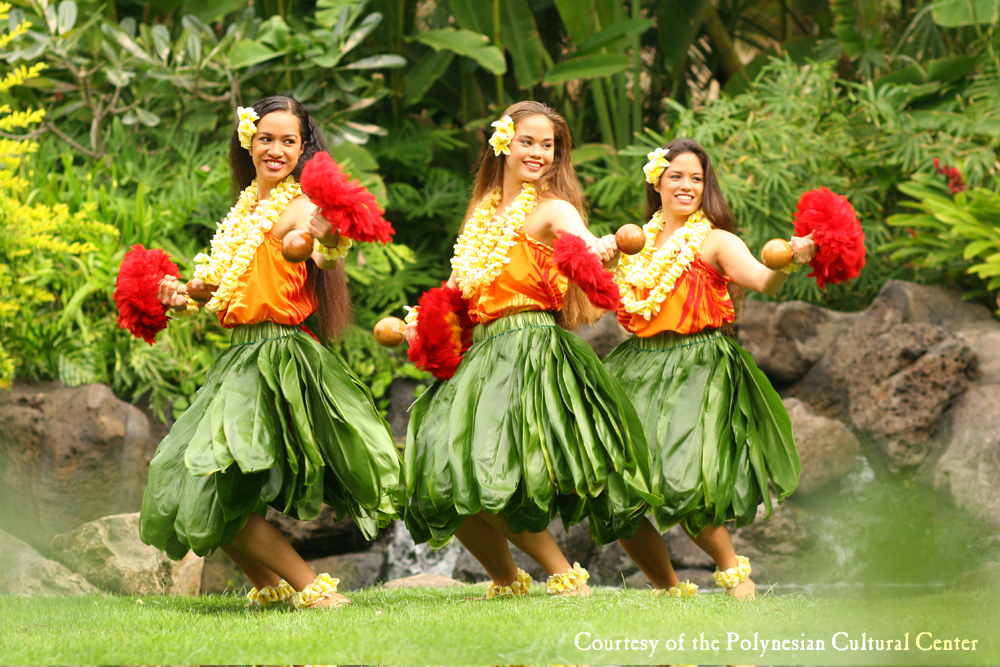
Hawaiian Music in Film and Television
Hawaiian music has made its mark in the world of film and television, often serving as a soundtrack to capture the beauty and essence of the islands. It has been featured in numerous films and TV shows, showcasing the unique culture and landscapes of Hawaii.
Soundtracks and Original Scores
Hawaiian music can be heard in popular films such as “Blue Hawaii” starring Elvis Presley, “Lilo & Stitch,” and “The Descendants.” These films prominently feature Hawaiian music in their soundtracks, immersing viewers in the vibrant sounds of the islands. Additionally, Hawaiian composers have created original scores for films, using traditional instruments and melodies to evoke the spirit of Hawaii in the cinematic experience.
Representation of Hawaiian Culture
Through its presence in film and television, Hawaiian music has helped to promote and preserve Hawaiian culture on a global scale. Its inclusion in soundtracks and storytelling not only enriches the viewing experience but also educates and sparks curiosity about the unique traditions and history of Hawaii. Hawaiian music serves as a reminder of the islands’ rich cultural heritage, encouraging viewers to explore and appreciate the beauty of the Hawaiian people and their traditions.
Hawaiian Music Festivals and Events
Hawaii is home to numerous music festivals and events that celebrate and showcase the diversity of Hawaiian music. These events bring together established musicians, emerging talents, and music enthusiasts from around the world.
Merrie Monarch Festival
The Merrie Monarch Festival is one of the most renowned hula competitions and showcases held annually in Hilo, Hawaii. It attracts hula performers from all over the world who come to compete and celebrate the art of hula. The festival also features live Hawaiian music performances, providing a platform for musicians to share their talents and engage with the community.
Hawaii Songwriting Festival
The Hawaii Songwriting Festival is an annual gathering of songwriters, musicians, and industry professionals. The festival offers workshops, songwriting camps, and performance opportunities, allowing participants to hone their craft and connect with like-minded individuals. The focus on Hawaiian music and songwriting traditions helps to foster creativity and encourage the development of new talent in the industry.
Honolulu Jazz Festival
The Honolulu Jazz Festival is a celebration of jazz music that showcases local and international jazz performers. The festival brings together talented musicians who explore the fusion of jazz with Hawaiian melodies and rhythms. Through performances, workshops, and masterclasses, the Honolulu Jazz Festival contributes to the vibrant jazz scene in Hawaii and promotes cultural exchange.
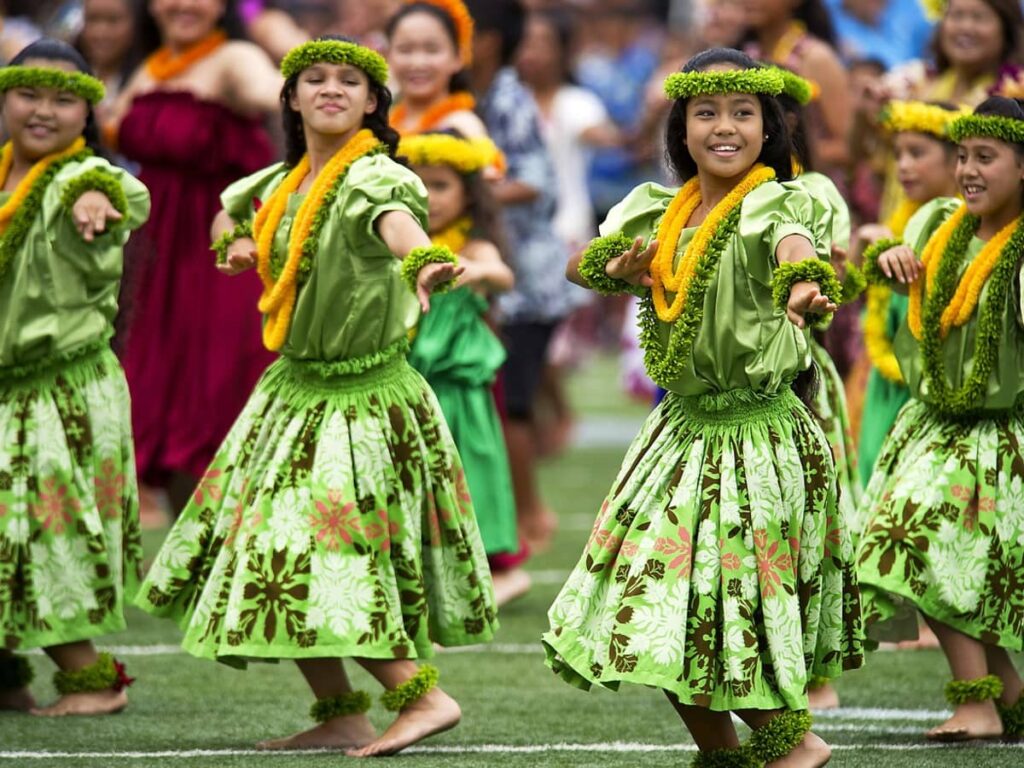
Preservation and Revitalization of Hawaiian Music
Efforts are underway to preserve and revitalize traditional Hawaiian music, ensuring that future generations have the opportunity to learn, appreciate, and celebrate this unique cultural heritage.
Efforts to Preserve Traditional Music
Organizations such as the Hawaiian Music Hall of Fame and the Bishop Museum in Honolulu work diligently to preserve and promote traditional Hawaiian music. They conduct research, collect and preserve recordings, and provide educational resources to the public. Through their efforts, the historical and cultural significance of traditional Hawaiian music is safeguarded for the future.
Hawaiian Language Revitalization
The revitalization of the Hawaiian language is directly linked to the preservation of Hawaiian music. Many Hawaiian songs contain lyrics in the Hawaiian language, and efforts to revive the language have contributed to the resurgence of traditional music. Immersion schools, language classes, and community programs are working to ensure that Hawaiian language and music remain vibrant and alive.
Educational Programs
Educational programs, both in schools and within the community, play a crucial role in preserving and promoting Hawaiian music. These programs provide opportunities for young learners to explore the art of Hawaiian music, learn traditional instruments, and engage with experienced musicians and educators. By fostering a love and appreciation for Hawaiian music from an early age, these programs help to ensure the continuation of this important cultural tradition.
Impact of Hawaiian Music Globally
Hawaiian music has had a profound impact on the global music scene, influencing musicians and captivating audiences worldwide. Its unique sound and cultural significance have made it an enduring source of inspiration for artists from various genres.
Influence on World Music
Hawaiian music’s influence can be heard in various musical genres around the world, from folk to reggae to pop. The sweet melodies, distinct instrumentations, and storytelling elements have inspired musicians to incorporate Hawaiian sounds into their own compositions. The global success of artists like Israel Kamakawiwo’ole and his rendition of “Over the Rainbow/What a Wonderful World” is a testament to the universal appeal and influence of Hawaiian music.
Tourism and Cultural Exchange
Hawaiian music plays a vital role in the tourism industry, enticing visitors from around the world to experience the beauty and culture of the islands. Through concerts, performances, and cultural events, visitors have the opportunity to immerse themselves in the rich musical traditions of Hawaii. This cultural exchange not only boosts tourism but also fosters a deeper appreciation and understanding of Hawaiian music and its significance in the broader context of world music.
In conclusion, the rich history of Hawaiian music is deeply intertwined with the culture, traditions, and natural beauty of the Hawaiian Islands. From its ancient Polynesian origins to its fusion with Western influences, Hawaiian music has evolved over time while maintaining its unique identity. With traditional instruments, hula dances, chants, and mele, Hawaiian music continues to captivate audiences and inspire musicians worldwide. Efforts to preserve and revitalize Hawaiian music ensure that future generations can continue to appreciate and celebrate this extraordinary cultural heritage. As Hawaiian music leaves its mark on the global stage, it serves as a reminder of the beauty, resilience, and spirit of the Hawaiian people and their enduring contributions to the world of music.
